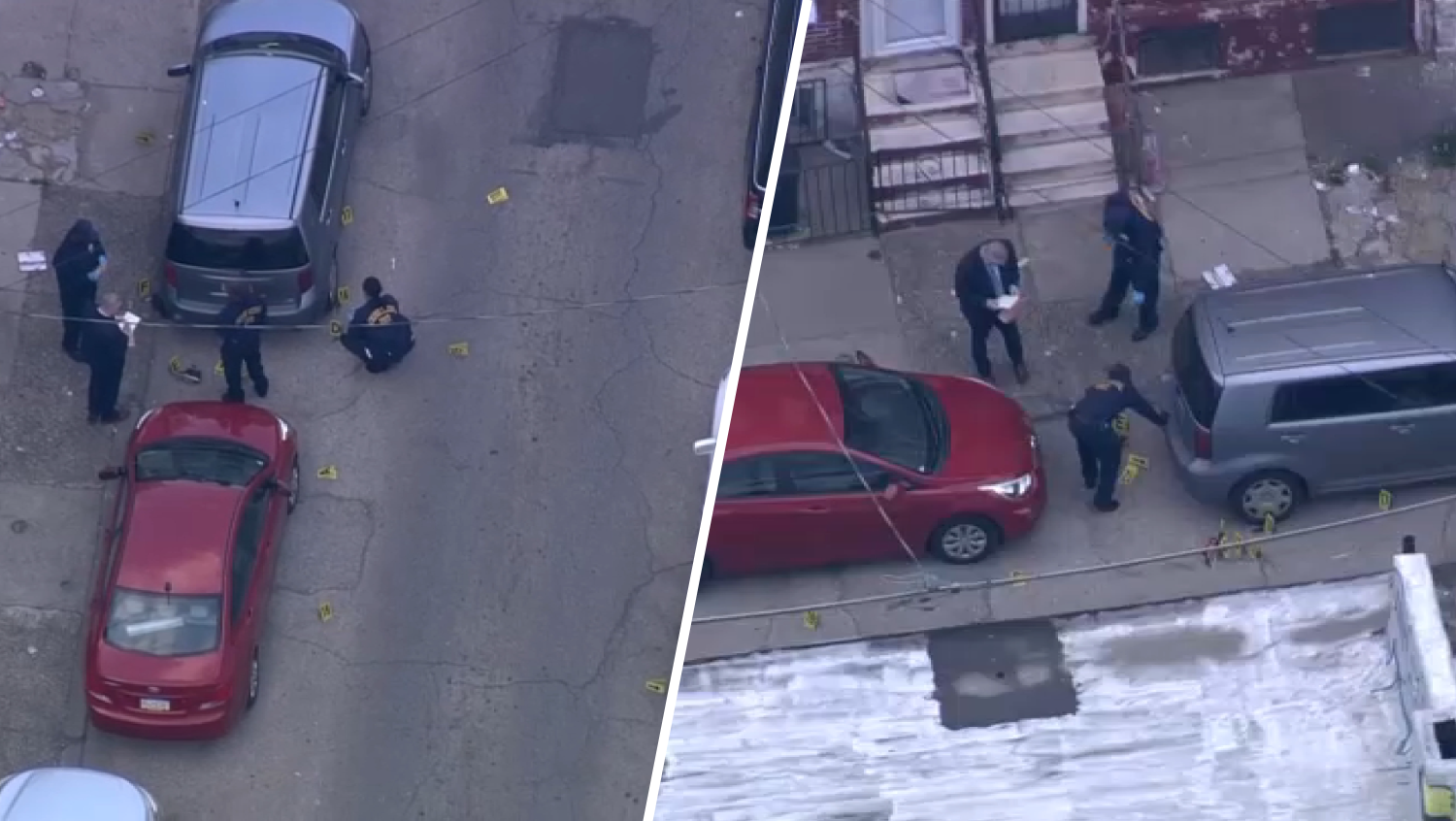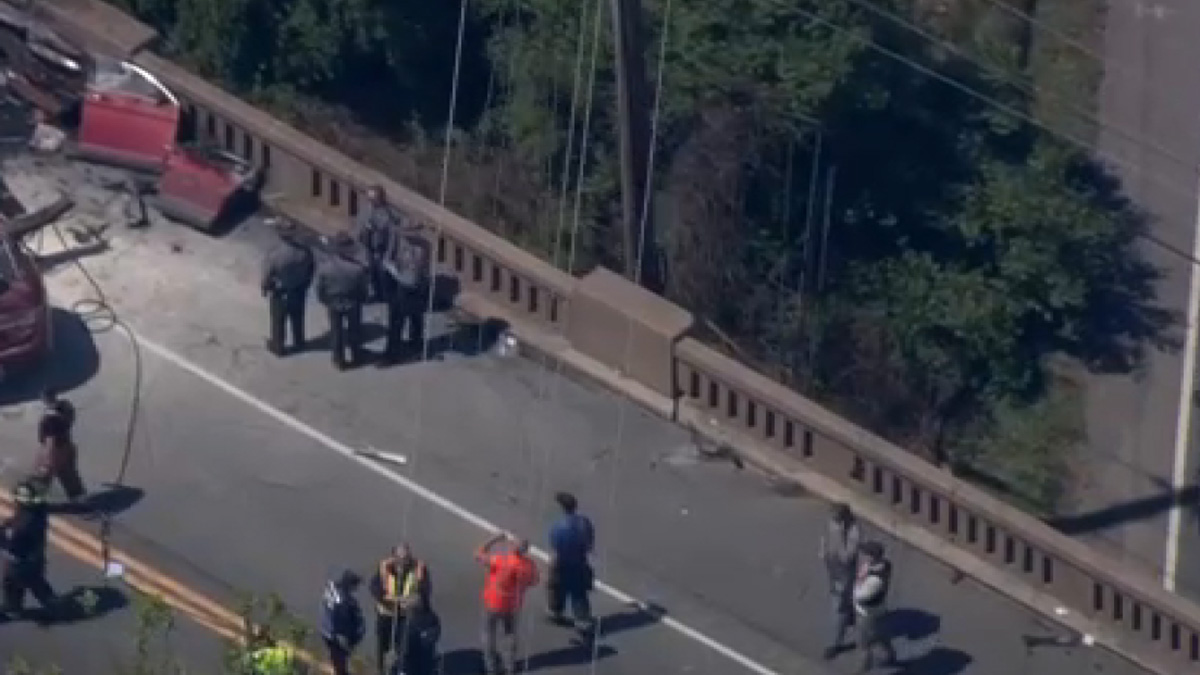Sitting on the corner of the 2300 block of W. Montgomery Ave. in North Philadelphia is a massive, three story house with a partially-collapsed roof, broken windows, and untamed vegetation growing on and through the building's exterior brick walls.
The house is vacant and has more than 10 violations cited by the Department of Licenses and Inspections (L&I) that date back to 2011.
Now, thanks to a new demolition bidding process under L&I's newly created Emergency Services Division, the building could be gone -- demolished -- in just two days.
Monticello Contractors, one of 26 companies pre-qualified by the city to work on demolitions and other city projects, won a quick, 5-minute curbside bid on the Montgomery Ave. property on Monday.
Director of L&I's Emergency Services Division Scott Mulderig said the 'instant' curbside bids are one way the city is looking to gets its most dangerous buildings demolished quickly, and before they collapse.
Local
Breaking news and the stories that matter to your neighborhood.
"On this type of bid, where it's an emergency, they have two hours to mobilize and come out here and start the demolition. We hold them to a 30-day time limit to get the whole thing done. We try to get to these, the worst of the worst first," Mulderig said.
The property is one of 135 buildings in the North Philadelphia area on the city's radar for being in danger of imminent collapse and one of an estimated 25,000 vacant properties that the city hopes to assess and secure before they become more precarious structurally, or havens for people who create another realm or risks including drugs and fires.
The Emergency Services Division, which launched in January, invites pre-approved contractors to bid on the more than 500 imminently dangerous properties in the city, through what is normally a two-day process.
"We go out on the site, we have the contractors meets us there, we go over the specs of each property, and the bids are due in to the procurement department by the next day. They award it to the lowest bidder," Mulderig said.
When a building is inspected and cited as imminently dangerous, the city goes through a notification process for the homeowner that includes violations as well as necessary repairs. If the owner does not respond, and if the property is in need of emergency demolition -- like the Montgomery Ave. property -- the city can conduct a curbside bid to hire a contractor to demolish the building, almost immediately.
For years, L&I has been making changes to speed up the demolition process, according to Mulderig. In 2010, revisions to the bidding procedures cut the demolition process from 90 to 30 days, and allowed contractors to bid on packages of multiple homes instead of only one home at a time.
L&I's Chief of Emergency Services, Albert McCarthy, said his department now secures contractor bids to demolish roughly 30 properties per week. With a recent infusion of $3 million added to the Department's 2014 fiscal year demolition budget, the department has paid contractors to demolish a total of 120 properties in the last 30 days.
Bill Pecarsky of Gama Wrecking, Inc. has been working on demolitions in the city for more than 30 years. He says, the city has a daunting task on its hands.
“You have all of these houses that are all in bad shape. It’s so dangerous. They’re just doing the best they can with worst of the worst that they can identify," Pecarsky said. "With most of these houses, it’s not a matter of if they're gonna collapse, it’s when they’re gonna collapse, and who’s gonna be in front of it when it happens.”
Mulderig said the swift bidding process is critical to preventing unexpected building collapses.
"When we see something visibly falling apart, the city's got to step in. So, we use this process to do that. We’d like to do it sooner in some instances, but it’s not as easy a task as everybody thinks," he said.
Personal injury attorney Bob Mongeluzzi said, when it comes to demolitions and safety, faster is not always better.
Mongeluzzi, whose law firm represents victims in last year’s fatal Market Street building collapse, argues that the city is not following its own rules, which require contractors to submit an engineering survey to L&I before beginning demolitions on structures higher than 3 stories. That rule was one of several changes the city made in response to the June 5 collapse. Six people died and 13 were hurt when a 4-story building that was being demolished collapsed on top of the adjacent Salvation Army Thrift Store.
The city's demolition planning code now states that a competent person employed by the demolition contractor for all demolitions must develop a site safety demolition plan or what’s more commonly referred to in the industry as an “engineering study.” Those plans, at a minimum, should outline the method of demolition, inspection of adjoining properties, potential hazards and plans for protecting neighboring structures as well as people. For demolition of structures taller than three stories, the engineering study must be completed and submitted to L&I by a licensed engineer.
“A site safety demolition plan is critical for projects in which the removal of materials poses risks to the safety of people or adjacent properties,” the city code states.
Pre-approved contractors that participate in the two-day curbside and procurement bids are not required to submit engineering surveys before their demolitions.
"Their own rules say that an engineering survey has to be done and submitted before a demolition permit can be issued. They’re not following their own rules and it exposes demolition workers to hazards," Mongeluzzi said.
We attempted to reach Mulderig for a response to that criticism but did not hear back by the time of publication. In previous conversations, he has said that most imminently dangerous buildings are fewer than four stories and don’t require engineering surveys for contractors who are pre-approved to work on city-administered projects.
A worker for one of the contracting companies that does demolition business with the city, but did not want to be named because he was not authorized to speak publicly, said contractors go over the same items required in an engineering survey, verbally, at the demolition site. If they had to invest the time to submit surveys to L&I, “the work wouldn’t get done. It’s impossible to get a permit now because regulations are so strict.” Sometimes, he argued, the “worst of the worst” buildings are in such bad shape, the danger of collapse outweighs the need for an engineering survey.
"If they’re being done without an engineering survey it is a violation of federal law and it is a violation of the City’s own rules,” Mongeluzzi said. “OSHA requires that an engineering survey be performed by a competent person (not necessarily an engineer) before demolition begins on ANY demolition project.”



